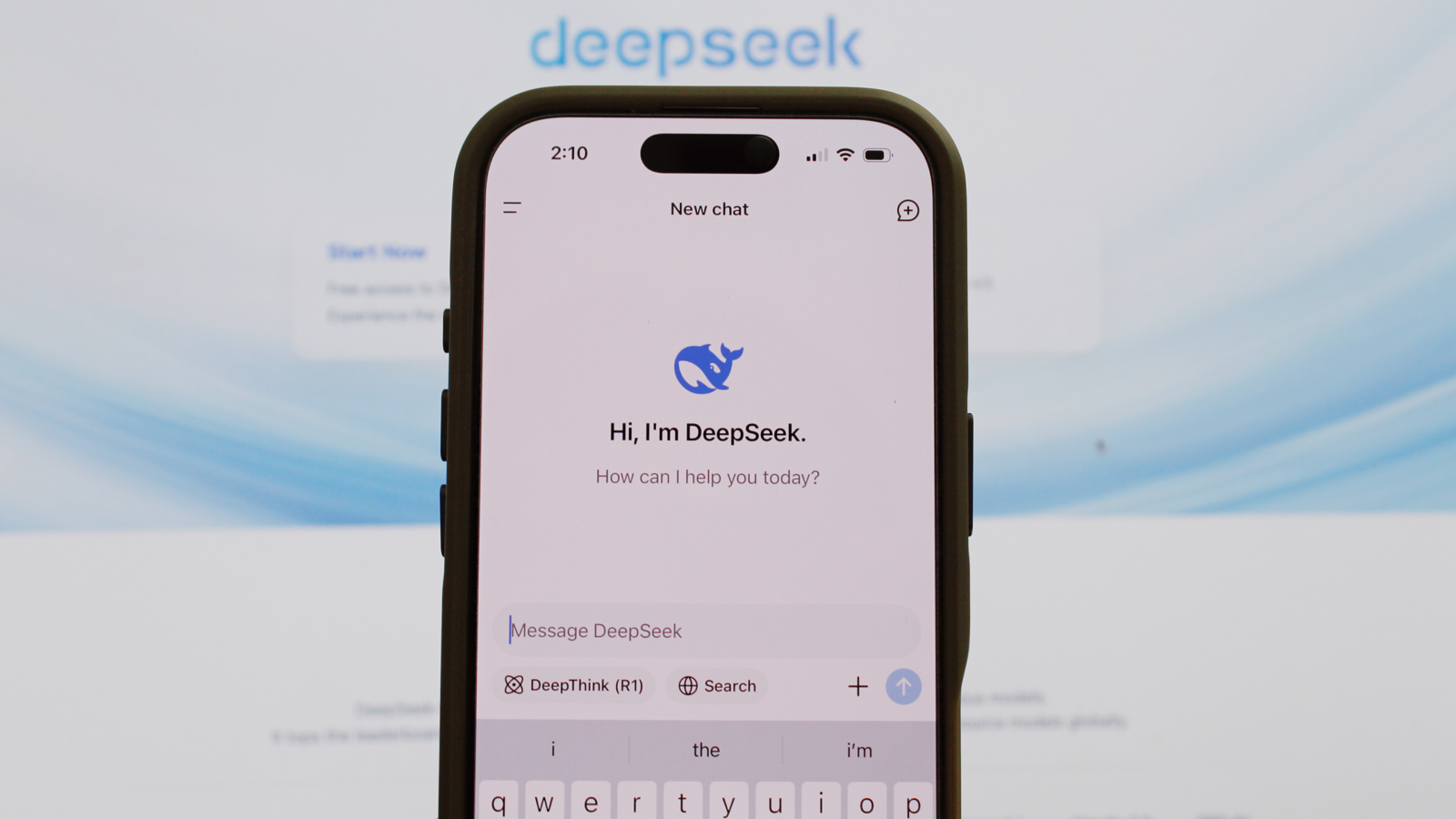Happy Thursday and welcome to CIO Upside.
Today: What enterprises can take away from the meteoric rise of DeepSeek. Plus: Tips on picking the right cybersecurity vendor as AI makes the bad guys smarter; and Amazon readies for the quantum onslaught.
Let’s take a peek.
DeepSeek’s Rise is the Tip of the Open-Source Iceberg, Experts Say

DeepSeek has quickly gobbled up all of the air time in the tech world. It may signal an open-source future for enterprises.
The Chinese firm has the tech industry in utter chaos after its R1 model quickly climbed to the top of the Apple app store this weekend. The company managed to develop a model comparable to OpenAI’s o1 reasoning model — but way, way cheaper.
The meteoric rise of DeepSeek’s product sent U.S. tech stocks tumbling, triggering a potential market correction and creating more competition in the AI industry, experts told The Daily Upside earlier this week. And DeepSeek’s model has obvious implications for big tech firms with a stake in the AI race. The big one? They need to get their heads in the open-source game.
Eric Schmidt, former CEO of Google, said in a Washington Post op-ed this week that DeepSeek represents a “turning point” in the AI race, and that U.S. firms must develop more open-source models to stay ahead. Some tech firms have hit the ground running: Nvidia-backed Hugging Face is seeking to replicate DeepSeek’s model and open source all of its components.
U.S. companies haven’t ignored open source entirely, said Praful Saklani, co-founder and CEO at Pramata. Amazon and Microsoft, for example, have had an “all-of-the-above strategy” for model offerings, including open-source ones, for a while, he said. Meta has been pushing open-source models for years.
Plus, some Google researchers may have known for a while now that open source would have its day: A 2023 leaked internal memo to Google employees noted that it and OpenAI “aren’t positioned to win this arms race” against open-source models.
What the likes of Google, Microsoft and AWS may need to do now is figure out how to wrap security and an “enterprise-ready package” around open-source models as an alternative to the expensive, closed proprietary ones, said Saklani.
“They’ve already signaled that they believe open source is going to be on the menu,” said Saklani. “The surprise isn’t that open source is on the menu. I think the surprise is that open source may be 95% as good as state-of-the-art … and may also cost 90% less.”
Given that the mounting cost of AI has become a major pain point for enterprises, DeepSeek and other open-source models may seem like an attractive offering, said Saklani. Deploying open-source models within your enterprise’s private cloud is “something that can be highly secure and should be scalable,” he said. Though it’s important to tread carefully, “if you’re in enterprise IT … you have to be tracking open source as an option.”
The problem, however, is that enterprises often “don’t have the expertise” to fully understand the capabilities or concerns of these open source models (or any new technology), relying on experts to know whether or not something is safe or reliable, said Bob Rogers, Ph.D., the co-founder of BeeKeeperAI and CEO of Oii.ai.
- Plus, DeepSeek’s model isn’t entirely open source – rather, it’s what’s known as open weight. Meaning: While you run and build on the model itself, the firm hasn’t offered access to any of its training data. “You don’t get that deep level of inspection,” said Rogers.
- And given how new DeepSeek’s model is to the market – and that it’s unclear how secure the firm’s overall infrastructure is – “in the US, enterprises really don’t know which end is up,” said Rogers. “It’s a bit of a wild west right now.”
If you do decide to explore DeepSeek – or any other open source model – within your enterprise, treat it as you would any database or core service, said Saklani: Put it inside a private cloud, put all of your own security measures in place, and make sure that it’s impregnable and can’t be attacked by the outside world.
“I wouldn’t go adopt DeepSeek right away,” said Saklani. “What I would do is try to understand what it would take to host an open-source model in your own cloud … And what do you gain from that? I think the pattern will emerge over the next 60, 90 days of how to use this at the enterprise level.”
Choosing a Security Firm? Here’s What You Need to Consider

It’s not easy figuring out who to trust with your enterprise’s data.
Picking a security vendor often causes option paralysis for enterprises. While large firms may come with the popular stamp of approval and a larger pool of resources, bigger may not always mean better when figuring out which vendor will work the best for your business.
“There’s a reason that these very large entities spend so much money on marketing … when sometimes their products probably don’t reflect the quality of what their marketing does,” said Darren Williams, CEO and founder of BlackFog.
Large firms definitely have their benefits, like stability and access to the “latest and greatest,” technology, said Williams. These firms often have the ability to invest in or acquire smaller startups to broaden their technology portfolios, he added.
The popularity and brand awareness that larger firms possess often gives rise to the “general assumption” that they are the best in the business, said Williams. “There’s a level of confidence and trust that comes along with that, because if they’ve been around for a while and then, if they’ve made so much money, they must be good, right? I don’t know if I buy that.”
- But as large firms get larger, it becomes more difficult to adapt. The sheer amount of clients these companies serve can make it difficult to offer personalized solutions and keep up, Williams noted. Innovation also becomes stifled at a certain size, he said.
- “We’re fighting criminals that are adapting faster than those bigger companies can absorb (other) companies and generate solutions,” he said.
While smaller vendors may lack resources or funding, many make up for it in personalized, innovative and adaptable approaches to problem-solving, he added. Fewer clients can mean more attention is paid to your enterprise’s specific needs.
However, small vendors generally face a higher risk of going belly up than big firms, said Williams. Last year saw 966 venture-backed startups shutter, according to data from TechCrunch. With 2025 on track to be another brutal year for startup failures, it’s healthy for enterprises to be cautious – especially when their data security is on the line.
Like any startup, a small security vendor “can go broke,” said Williams. “We see them come and go all the time ourselves. That is a genuine problem.”
So how can your enterprise pick the right firm? To put it simply, “due diligence,” said Williams. With a smaller vendor, take note of things like funding and experience of the executives running the firm, as well as industry notoriety and awards, he said. As for the tech itself, make sure the product is actually solving the needs of your business and has been independently reviewed. “A good solution is going to be vetted by somebody,” he said.
Amazon Patent Preps for the Quantum Future

Quantum computers are more than a little bit fickle.
As tons of firms work on ways to make them more usable, Amazon is throwing its hat in the ring: The company is seeking to patent a “quantum computing monitoring system” that evaluates whether a quantum computer performs an algorithm or tasks the way it’s meant to, allowing users to track the system’s performance with a “predetermined list of metrics.”
When a user submits a request to execute an algorithm using a hybrid of classical and quantum resources, the system monitors its progress against metrics that the user selects. If the quantum system starts to fail at certain points, it will alert users and allow them to make adjustments such as fixing the parameters of the algorithm or cancelling the use of quantum resources altogether.
The consistent monitoring this system offers could help quantum users quickly identify and fix errors, and could allow these systems to scale.
Scaling is a major focus for tech giants looking to get ahead in the fledgling market. Google’s latest quantum chip, Willow, performs calculations at a fraction of the speed of the world’s best supercomputers, and has the capability to reduce errors with scale. IBM, meanwhile, announced its most advanced quantum computer yet in November. Microsoft plans to launch a commercial quantum computer this year, and announced a new program called Quantum Ready for businesses in a recent blog post.
And Amazon doesn’t want to be left behind: In November, the company launched a program called Quantum Embark, an advisory program aiming to help AWS customers understand and prepare for quantum computing to scale. The program is a part of Amazon Braket, which gives users access to quantum hardware from several different startups. It’s also not the first time we’ve seen Amazon seek to patent quantum tech.
Though the market is too nascent to tell which firms will shake out to be leaders, any IP that allows quantum to scale – or makes it easier for enterprises to access – could give Amazon an advantage in the long-run.
Extra Upside
- Venture Onward: 8VC, led by Palantir founder Joe Lonsdale, is seeking close to $1 billion for a new fund.
- Chopping Block: Amazon is laying off a “small number” of employees in its communications and sustainability units.
- Cloudy Day: Microsoft reported lighter than expected growth of it’s cloud business, causing shares to drop 5% in after-hours trading.
CIO Upside is written by Nat Rubio-Licht. You can find them on X @natrubio__.
CIO Upside is a publication of The Daily Upside. For any questions or comments, feel free to contact us at team@cio.thedailyupside.com.
